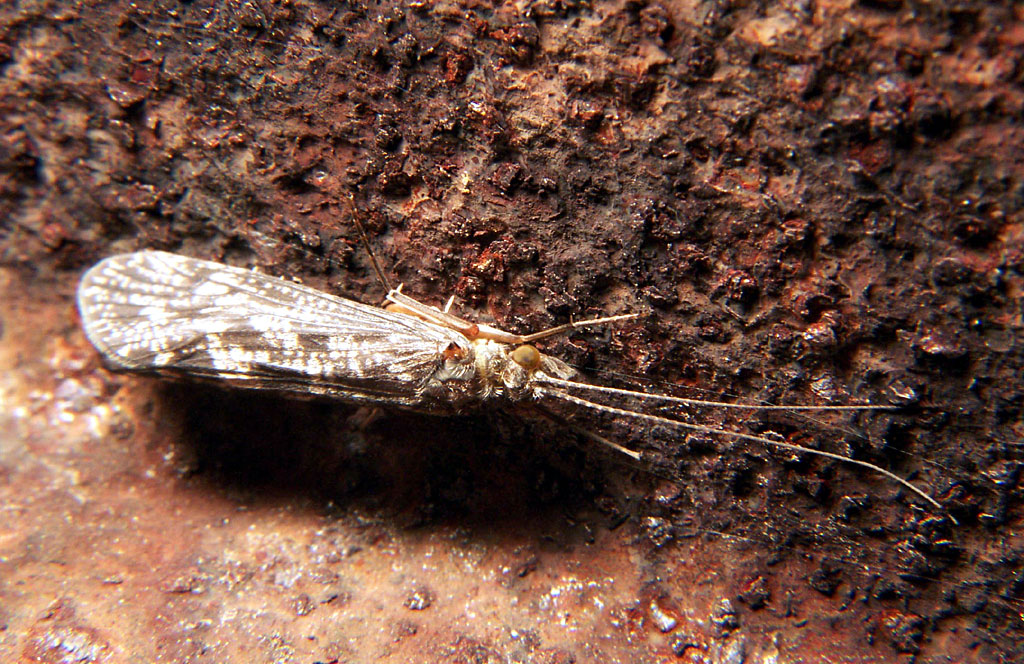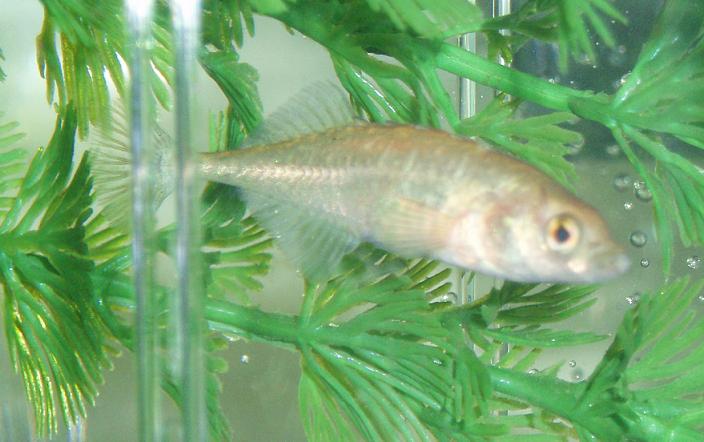|
Ironoquia Plattensis
''Ironoquia plattensis'', the Platte River caddisfly, is a species of caddisfly in the family Limnephilidae. It is endemic to Nebraska.NatureServe 2017''Ironoquia plattensis''.NatureServe Explorer Version 7.1. Accessed 1 September 2017. This species was first described to science in 2000.Alexander, K. D. and Whiles, M. R. 2000. A new species of ''Ironoquia'' (Trichoptera: Limnephilidae) from an intermittent slough of the Central Nebraska Platte River, Nebraska. ''Entomol News'' 111(1) 1–7. This caddisfly was described from its habitat on the Platte River in central Nebraska.Harner, M. J. and Geluso, K. 2012Effects of cattle grazing on Platte River caddisflies (''Ironoquia plattensis'') in central Nebraska.''Freshwater Science'' 31:2 389-94. Its type locality is near Grand Island.Vivian, L. A., et al. 2013Current known range of the Platte River caddisfly, ''Ironoquia plattensis'', and genetic variability among populations from three Nebraska Rivers.''Journal of insect conserv ... [...More Info...] [...Related Items...] OR: [Wikipedia] [Google] [Baidu] |
Caddisfly
The caddisflies, or order Trichoptera, are a group of insects with aquatic larvae and terrestrial adults. There are approximately 14,500 described species, most of which can be divided into the suborders Integripalpia and Annulipalpia on the basis of the adult mouthparts. Integripalpian larvae construct a portable casing to protect themselves as they move around looking for food, while Annulipalpian larvae make themselves a fixed retreat in which they remain, waiting for food to come to them. The affinities of the small third suborder Spicipalpia are unclear, and molecular analysis suggests it may not be monophyletic. Also called sedge-flies or rail-flies, the adults are small moth-like insects with two pairs of hairy membranous wings. They are closely related to the Lepidoptera (moths and butterflies) which have scales on their wings; the two orders together form the superorder Amphiesmenoptera. The aquatic larvae are found in a wide variety of habitats such as streams, river ... [...More Info...] [...Related Items...] OR: [Wikipedia] [Google] [Baidu] |
Indicator Species
A bioindicator is any species (an indicator species) or group of species whose function, population, or status can reveal the qualitative status of the environment. The most common indicator species are animals. For example, copepods and other small water crustaceans that are present in many water body, water bodies can be monitored for changes (biochemical, physiological, or behavioural) that may indicate a problem within their ecosystem. Bioindicators can tell us about the cumulative effects of different pollution, pollutants in the ecosystem and about how long a problem may have been present, which Water pollution#Measurement, physical and chemical testing cannot. A biological monitor or biomonitor is an organism that provides quantitative property, quantitative information on the quality of Environment (biophysical), the environment around it. Therefore, a good biomonitor will indicate the presence of the pollutant and can also be used in an attempt to provide additional inform ... [...More Info...] [...Related Items...] OR: [Wikipedia] [Google] [Baidu] |
Integripalpia
The Integripalpia are a suborder of Trichoptera The caddisflies, or order Trichoptera, are a group of insects with aquatic larvae and terrestrial adults. There are approximately 14,500 described species, most of which can be divided into the suborders Integripalpia and Annulipalpia on the b ..., the caddisflies. The name refers to the unringed nature of maxillary palp's terminal segment in the adults. Integripalpian larvae construct portable cases out of debris during the first larval instar, which are enlarged through subsequent instars. These cases are often very specific in construction at both the family and genus level. External linksTree Of Life Integripalpia Page Insect suborders {{Trichoptera-stub ... [...More Info...] [...Related Items...] OR: [Wikipedia] [Google] [Baidu] |
Salt Creek Tiger Beetle
The Salt Creek tiger beetle (''Cicindela nevadica lincolniana'') is a critically endangered subspecies of tiger beetle endemic to the saline wetlands of northern Lancaster County, Nebraska, adjacent to and immediately to the north of the city of Lincoln. It is a predatory insect, using its mandibles to catch other insects. The beetle is one of the rarest insects in North America; surveys showed that 194 adults existed in 2009, down from 263 in 2008, and 777 in 2000. However, efforts are continuing to boost the population, which in 2013 numbered 365 beetles: one beetle for each day in a regular year. Description The Salt Creek tiger beetle measures about 12 mm (0.5 in.) in length. The beetle has a metallic brown to dark olive green coloration, with a dark metallic green underside. Its body form and color pattern differs from other tiger beetle subspecies. Life cycle Little is known about the life cycle of the Salt Creek tiger beetle. Adults emerge around June 1 an ... [...More Info...] [...Related Items...] OR: [Wikipedia] [Google] [Baidu] |
Brook Stickleback
} The brook stickleback (''Culaea inconstans'') is a small freshwater fish that is distributed across the US and Canada. It grows to a length of about 2 inches. It occupies the northern part of the eastern United States, as well as the southern half of Canada. Small populations are scattered throughout the Mississippi-Great Lakes basin extending to Colorado, New Mexico, Kentucky, Tennessee, etc., though some of these areas are not native to the species. This small fish inhabits clear, cool streams and lakes. They eat small invertebrates, algae, insect larvae, and occasionally their own eggs. They are also preyed upon by smallmouth bass and northern pike. Feeding time is usually dawn and sunset. The brook stickleback does have active competition mostly from minnows, but feeding times are different, along with diet.Stewart, D.B. 2007.''Fish diets and food webs in the Northwest Territories: brook stickleback (''Culaea inconstans''). Canadian Manuscript Report of Fisheries and A ... [...More Info...] [...Related Items...] OR: [Wikipedia] [Google] [Baidu] |
Woodhouse's Toad
Woodhouse's toad (''Anaxyrus woodhousii'') is a medium-sized () true toad native to the United States and Mexico. There are three recognized subspecies. ''A. woodhousii'' tends to hybridize with '' Anaxyrus americanus'' where their ranges overlap. Taxonomy Woodhouse's toad was first described in 1854 by the French herpetologist Charles Frédéric Girard. He gave it the name ''Bufo woodhousii'' in honor of the American physician and naturalist Samuel Washington Woodhouse. The large genus ''Bufo'' was split by Frost ''et al.'' in 2006, with the North American species being included in the genus ''Anaxyrus'' and this toad becoming ''A. woodhousii''. There are three recognised subspecies: *Rocky Mountain toad – '' Anaxyrus woodhousii woodhousii'' ( Girard, 1854) *East Texas toad – ''Anaxyrus woodhousii velatus'' (Bragg and Sanders, 1951)Bragg, A. N., and O. Sanders. 1951. A new subspecies of the ''Bufo woodhousii'' group of toads (Salientia: Bufonidae). Wasmann Journal of Biol ... [...More Info...] [...Related Items...] OR: [Wikipedia] [Google] [Baidu] |
Plains Leopard Frog
The Plains leopard frog (''Lithobates blairi'') is a spotted frog found in North America. It is sometimes referred to as Blair's leopard frog, named after the noted zoology, zoologist and University of Texas professor, Dr. W. Frank Blair. Description The Plains leopard frog grows from in length, and is typically brown in color. Their common name originates from the distinctive irregular, dark colored spotting on their backs. They have long, powerful legs, and are capable of leaping great distances. The frog's spots are brown or greenish brown, and are not ringed in white. There is a distinct white line above the sides of the jaw. The lines along the sides of the back are broken toward the rear, with the short broken section closer to the center of the back. There is often a white spot in the center of the Tympanum (anatomy), tympanum, and a dark spot on the top the snout. Behavior Although found throughout semiarid regions, the Plains leopard frog is almost always found in or v ... [...More Info...] [...Related Items...] OR: [Wikipedia] [Google] [Baidu] |
Etheostoma Exile
''Etheostoma exile'', the Iowa darter, is a species of freshwater ray-finned fish, a darter from the subfamily Etheostomatinae, part of the family Percidae, which also contains the perches, ruffes and pikeperches. It is, along with about 17 other species of darters, is native to the lakes and streams of Iowa. In some parts of its range, the Iowa darter is also known as the weed darter, red-sided darter, or yellowbelly. Iowa darters, like many other darters, are about 2–3 in (51–76 mm) in length and may be easily confused with other darters of similar color. Range Native distribution of the Iowa darter extends north to central Canada, east to New York, and south to central Illinois, and the species is particularly common in the western Great Lakes drainages and Iowa. Western populations are distributed patchily in Colorado, Wyoming, Montana, and Alberta. They are native in Colorado only in the South Platte River drainage, but recent research has also placed them in the ... [...More Info...] [...Related Items...] OR: [Wikipedia] [Google] [Baidu] |
Fathead Minnow
Fathead minnow (''Pimephales promelas''), also known as fathead or tuffy, is a species of temperate freshwater fish belonging to the genus ''Pimephales'' of the cyprinid family. The natural geographic range extends throughout much of North America, from central Canada south along the Rockies to Texas, and east to Virginia and the Northeastern United States.Page, Lawrence M. and Brooks M. Burr (1991), ''Freshwater Fishes'', p. 129-130, Houghton Mifflin, New York, NY. This minnow has also been introduced to many other areas via bait bucket releases. Its golden, or xanthic, strain, known as the rosy-red minnow, is a very common feeder fish sold in the United States and Canada. This fish is best known for producing Schreckstoff (a distress signal). Physical description The fathead minnow in its wild form is generally dull olive-grey in appearance, with a dusky stripe extending along the back and side, and a lighter belly. There is a dusky blotch midway on the dorsal fin. Breeding ... [...More Info...] [...Related Items...] OR: [Wikipedia] [Google] [Baidu] |
Brassy Minnow
The brassy minnow (''Hybognathus hankinsoni'') is a species of fish belonging to the family Cyprinidae. The family Cyprinidae consists of mainly freshwater minnows and carps. The fish gets its scientific name (''Hybognathus hankinsoni'') from the Greek word Hybognathus, meaning bulging jaw, and hankinsoni from the American scientist, T.L. Hankinson. It is commonly found throughout the northern United States and Canada.Pam Fuller and Matt Neilson. 2016. Hybognathus hankinsoni. USGS Nonindigenous Aquatic Species Database, Gainesville, FL. https://nas.er.usgs.gov/queries/factsheet.aspx?SpeciesID=544 Revision Date: 9/26/2012 Physical description The brassy minnow is typically 4-7.5 cm long and weighs 0.7-4 g.Rodger, Robin W. A. "Fish Facts." (1991): n. pag. B.C. Fish Facts. British Columbia Ministry of Fisheries. Web. It can be identified by its brassy side coloration, cream underbelly and olive green back. It has larger than usual leptoid(bony ridge) scales.Brassy Minnow — ... [...More Info...] [...Related Items...] OR: [Wikipedia] [Google] [Baidu] |
Plains Topminnow
The plains topminnow (''Fundulus sciadicus'') is a species of freshwater topminnow found in North America. The fish has a small range within the United States of America which consists of two major populations. Description The plains topminnow is small, almost always shorter than 2.5 inches (6.35 cm). The fish has a flat head and an upturned (superior) mouth. It lacks any distinctive markings. The male plains topminnow's fins are iridescent and have a red tip with blue-purple bands, as well as a gold stripe on the body. Both males and females are usually olive-brown with white on its underside. The plains topminnow also has bronze reflections with faint blue-green cross-hatching on its back and sides. Its fins are colorless or yellowish in immature fish, females and non-breeding males. There are no black bars on the fish's body, which makes it distinguishable from the banded killifish, a more common species, which is often found in the same habitats as the plains topminnow. ... [...More Info...] [...Related Items...] OR: [Wikipedia] [Google] [Baidu] |




